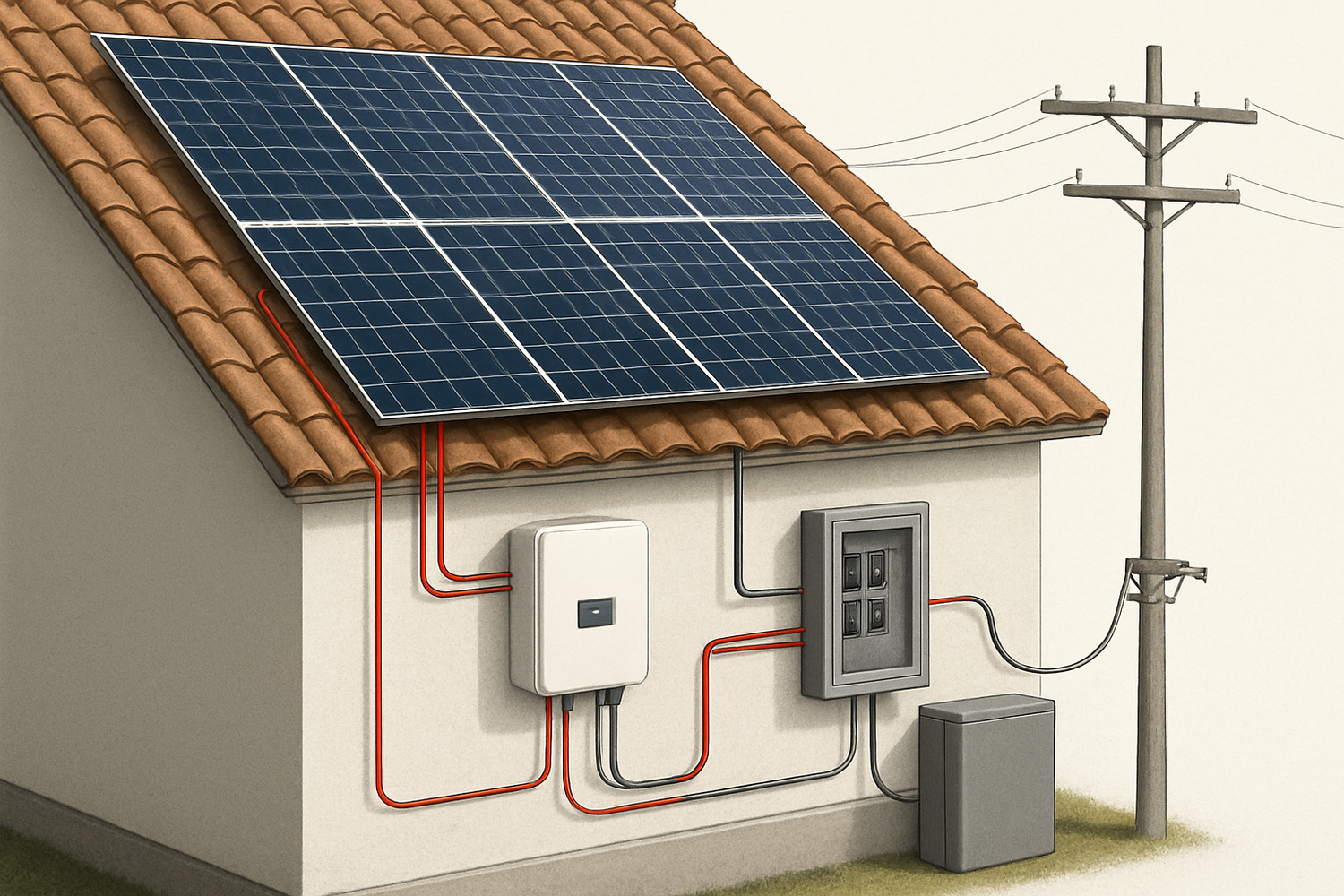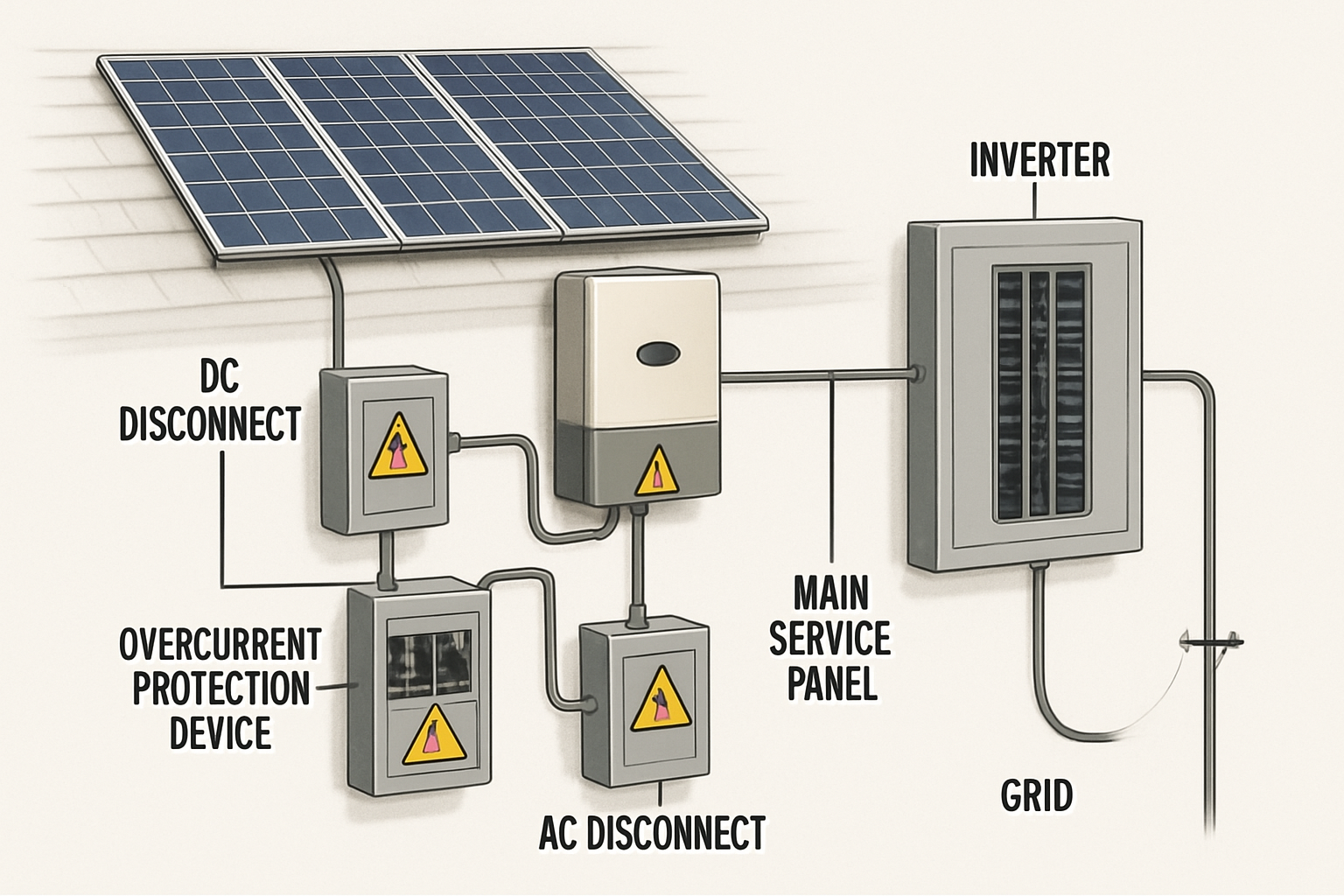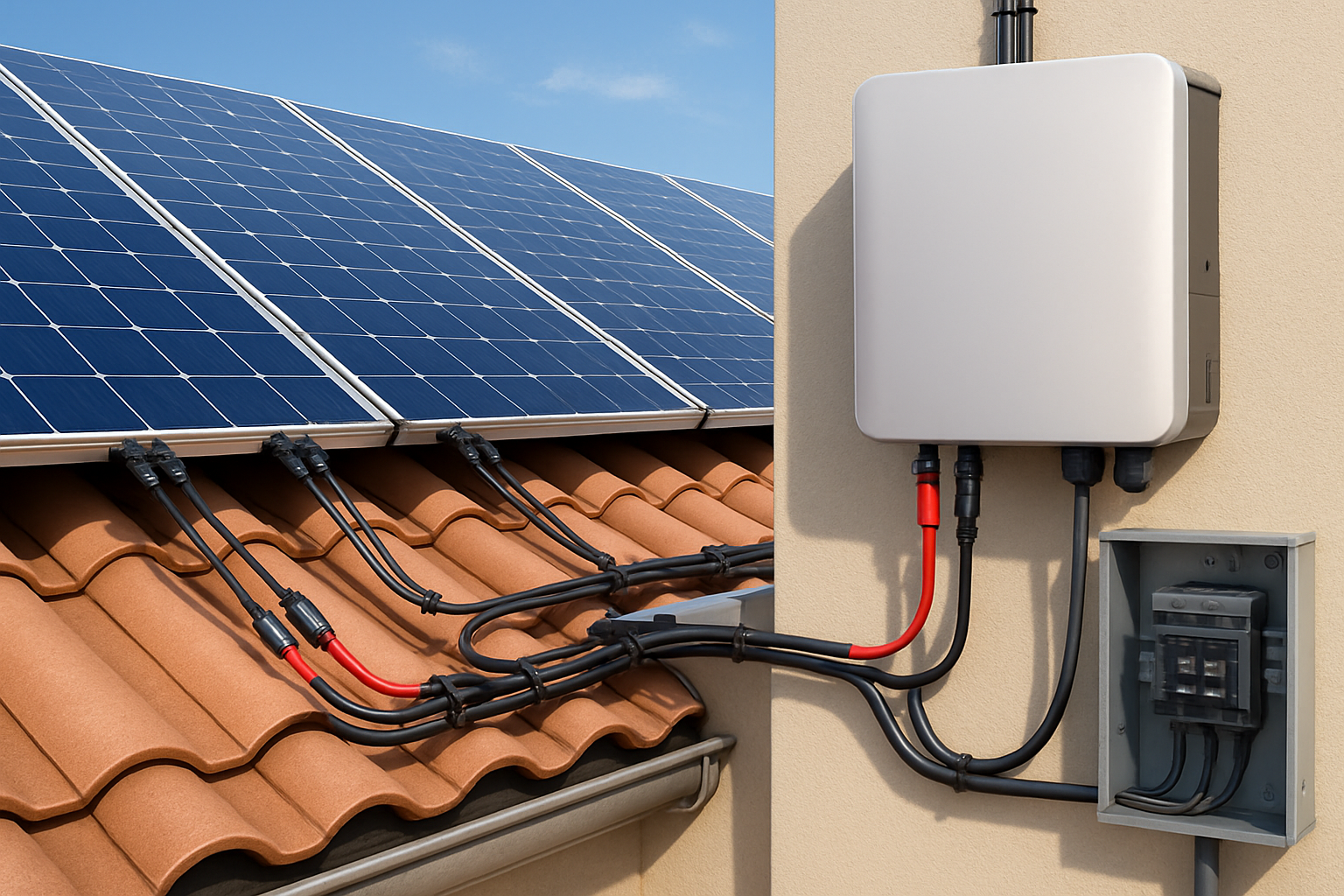Designing and installing a solar panel system requires careful planning, often called 'mapping.' This process involves understanding each component and how they connect to work together efficiently. A well-mapped system provides reliable power, reduces energy costs, and moves you closer to energy independence. This guide will walk you through the essential elements of mapping your solar panel system, from selecting panels and inverters to configuring the wiring.

Understanding Key Solar System Components
Solar Panels: The Energy Harvesters
Solar panels, or photovoltaic (PV) modules, are the foundation of any solar energy system. They directly convert sunlight into electricity through the photovoltaic effect. According to Solar Energy Perspectives by the IEA, photovoltaic systems directly convert light into electricity. These modules are assembled from individual solar cells, and several modules can be linked together to provide power ranging from a few watts to hundreds of megawatts.
- Types: Common types include monocrystalline and polycrystalline, known for their efficiency and durability. Thin-film modules offer flexibility and diverse applications, especially for building integration.
- Specifications: Key factors include wattage (power output), efficiency (how well they convert sunlight), and voltage. Matching these specifications is crucial for optimal system performance.
Inverters: DC to AC Conversion
Solar panels produce direct current (DC) electricity, but most homes and appliances use alternating current (AC). This is where inverters play a critical role. An inverter transforms the DC electricity from your PV modules into AC electricity.
- String Inverters: These are common for residential systems, connecting multiple panels in a 'string' to a single inverter.
- Microinverters: Installed at each panel, microinverters optimize power output for individual panels, which can be beneficial in shaded conditions.
- Hybrid Inverters: These versatile inverters can manage power from solar panels, batteries, and the utility grid, making them ideal for systems with energy storage.
The components associated with this delivery process, such as inverters, transformers, electrical protection devices, wiring, and monitoring equipment, are all considered part of the “balance of system” (BOS).
Designing Your Solar Array Layout
Site Assessment and Panel Placement
Effective solar system mapping begins with a thorough site assessment. You need to identify the best locations for your panels to maximize sunlight exposure throughout the day and year. Consider factors like:
- Sunlight Exposure: Analyze sun paths and potential shading from trees, chimneys, or neighboring buildings.
- Orientation and Tilt: In the Northern Hemisphere, south-facing roofs generally receive the most sun. The tilt angle should optimize for year-round energy production.
- Roof Space: Measure available roof area to determine how many panels can fit without overcrowding.
String Sizing and Configuration
Once you know your panel count, you will configure them into 'strings.' Panels in a string are connected in series, increasing the total voltage. Multiple strings can then be connected in parallel to increase the total current. This configuration directly impacts the inverter's performance.
- Voltage Matching: The total voltage of your panel string must fall within the operating voltage range of your chosen inverter.
- Current Considerations: Parallel connections increase current, which must also be within the inverter's specifications.
- Optimization: Proper string sizing ensures the inverter operates at its maximum power point, leading to higher energy yield.
Wiring Your Solar System for Performance and Safety
DC Wiring: Panels to Inverter
The DC wiring connects your solar panels to the inverter. This part of the system carries high-voltage DC electricity, requiring specific cable types and careful installation.
- Cable Types: Use UV-resistant, outdoor-rated PV wire designed for solar applications.
- Connectors: MC4 connectors are standard for secure, weatherproof panel interconnections.
- Polarity: Always maintain correct positive and negative polarity to avoid damage.
- Conduit: Run DC wiring through appropriate conduit to protect it from environmental factors and physical damage.
Electrical tests, such as DC string measurements, are part of the installation process to ensure proper functionality.
AC Wiring: Inverter to Electrical Panel
The AC wiring carries the converted electricity from the inverter to your home's main electrical service panel. This allows your home to use the solar power and, in grid-tied systems, send excess electricity back to the utility grid.
- Cable Gauges: Select appropriate wire gauges based on the inverter's AC output current and the length of the wire run.
- Circuit Breakers: Install correctly sized circuit breakers in your electrical panel to protect the AC circuit from overcurrent.
- Grounding: Proper grounding is essential for safety and system protection against electrical faults and lightning.
Innovations like the ConnectDER device can simplify this connection by mounting between a home’s electric meter and meter socket, potentially saving hundreds or thousands of dollars by removing the need to upgrade electrical service panels or run wiring through a home’s interior.
Integrating Energy Storage Solutions
The Role of Batteries in Solar Systems
Energy storage systems (ESS) are becoming increasingly vital for maximizing solar self-consumption and achieving greater energy independence. Batteries store excess solar electricity generated during the day for use at night or during grid outages.
- LiFePO4 Batteries: Lithium iron phosphate (LiFePO4) batteries are a popular choice due to their high performance, safety, and long cycle life.
- Capacity and Power: Consider both the energy capacity (how much energy it stores, in kWh) and the power rating (how quickly it can deliver energy, in kW) when selecting a battery.
Hybrid Inverters and ESS Integration
Hybrid inverters are designed to seamlessly integrate solar panels, batteries, and the grid. They intelligently manage power flow, prioritizing solar self-consumption, charging batteries, or sending excess power to the grid as needed. This integration offers enhanced reliability and greater control over your energy usage.
Ensuring Long-Term Reliability and Efficiency
Monitoring and Maintenance
Once your solar system is installed, ongoing monitoring and maintenance are crucial for ensuring its long-term performance and efficiency. Monitoring systems allow you to track energy production and identify any issues promptly.
- Performance Monitoring: Regularly check your system's output to ensure it meets expectations.
- Inspections: Periodically inspect panels for dirt, debris, or damage.
- Cleaning: Clean panels as needed to prevent efficiency losses from accumulated dust or grime.
Permitting and Safety Standards
Adhering to local building codes, electrical standards, and permitting requirements is non-negotiable. These regulations ensure the safety and legality of your installation. Costs for permits are necessary for developing, construction, and operation.
- Professional Installation: Engaging qualified installers ensures compliance with all safety protocols.
- Safety Measures: Consider security systems and proper grounding to protect your investment and ensure safe operation.
Achieving Energy Independence
Mapping a solar panel system is a detailed process that lays the groundwork for a successful and reliable energy solution. By carefully planning panel placement, understanding inverter types, and executing precise wiring, you create a system that maximizes energy production and minimizes risks. Integrating robust energy storage solutions further enhances your system's resilience and capability. This comprehensive approach empowers you to achieve true energy independence with a system designed for lasting performance.
Frequently Asked Questions
What is the photovoltaic effect?
The photovoltaic effect is the process by which solar cells directly convert light into electricity. When photons from sunlight strike the semiconductor material in a solar cell, they excite electrons, creating an electric current.
Do off-grid solar systems always need batteries?
Off-grid systems may or may not require an electricity storage device such as a battery for back-up power. Some applications, such as solar-powered irrigation systems, typically include water reservoirs instead of batteries for storage.
What is a hybrid inverter?
A hybrid inverter is a type of solar inverter that can manage power flow from multiple sources: solar panels, a battery bank, and the utility grid. It can charge batteries, power your home, and send excess electricity to the grid, offering versatile energy management.
How often should I maintain my solar system?
While solar systems require minimal maintenance, regular monitoring is always recommended. Visual inspections for dirt or damage can be done quarterly, and cleaning panels once or twice a year, depending on your environment, helps maintain optimal efficiency.





Leave a comment
All comments are moderated before being published.
This site is protected by hCaptcha and the hCaptcha Privacy Policy and Terms of Service apply.